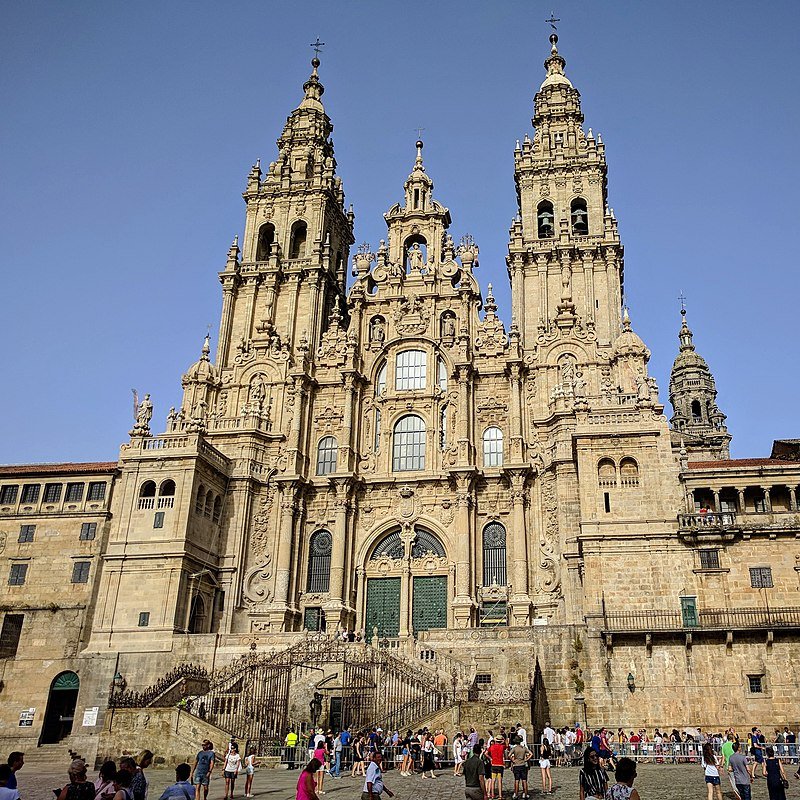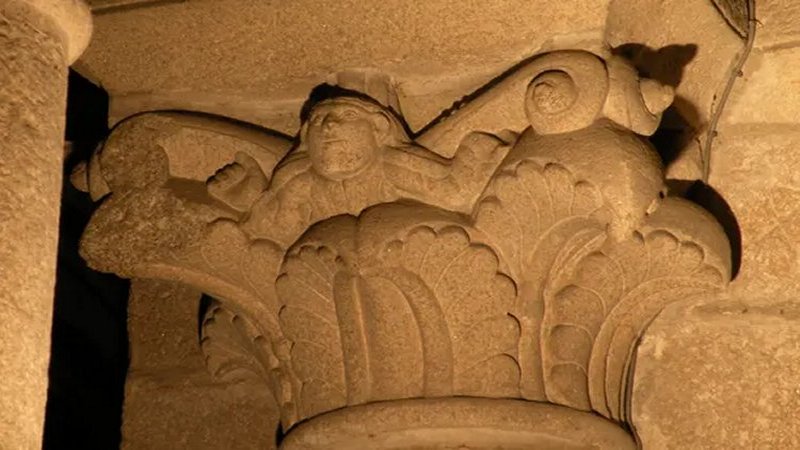Jan Bartek – AncientPages.com – Sometimes you can stare at something without noticing it all. This carving has been hiding in plain sight for 900 years and millions of people who visited the beautiful Cathedral Santiago De Compostela haven’t seen it. The carving of this important man was there all along, but it was never meant to be seen, but now it has finally been “discovered”.

Cathedral Santiago de Compostela – Credit: stephenD – CC BY-SA 4.0
Santiago de Compostela located in Galicia, in the far north-west of Spain is a famous pilgrimage site that has become a symbol of the Spanish Christians’ struggle against Islam. Destroyed by the Muslims at the end of the 10th century, it was completely rebuilt in the following century.
The Cathedral Santiago de Compostela is today a UNESCO heritage site and visited by thousands of people every day. In 2019 alone, the official number of pilgrims reaching the city was 350,000.
It’s almost impossible to believe no-one has seen this small carved male figure hiding in one of the corners, but obviously, it has gone unnoticed until now when it has been discovered by a British art scholar.
Scholars say this carving is a self-portrait of a stonemason who worked on the cathedral in the 12th century.
Only the masons creating the building could see the figure. Credit: Jennifer Alexander
“You find this in medieval buildings,” Dr. Jennifer Alexander told the Observer. “They’re usually in dark corners where only another stonemason would find them. This one is in a bit of the building where you’d have to be a stonemason to be up there to see it. It’s tucked away in among a whole set of capitals [the top of a column] that are otherwise plain.
“It’s just such a charming connection between us and the person that carved it. It’s almost as if it was designed just for us to see it by those people working on the building. Of course, this stonemason probably had no idea that he’d have to wait so long to be spotted.”
Alexander who is a reader in art history at the University of Warwick, specializes in the architectural history of the great churches and cathedrals of the medieval period. She discovered this figure in conducting an intricate survey of Santiago de Compostela cathedral.
“These masters had to have many skills since they were also responsible for engineering, supply of materials, hiring the workforce, and dealing with the patron, who might be a senior member of the clergy or the nobility,” Alexander said. She added that such craftsmen have remained anonymous throughout the centuries even into more recent times: “When they were building Liverpool cathedral in the 20th century, they published lists of the craftsmen that worked on the building and they never mentioned stonemasons. So, these are the unsung geniuses.”
Whether you are a religious person or simply just an admirer of wonderful architecture visiting an old European cathedral is an unforgettable experience.
If you go to an old cathedral in Europe pay close attention to certain details and figures that are visible before you have entered the building.
Gargoyles – St. Stephen’s Cathedral, Vienna, Austria
For example, if you look at the roofs and towers of Medieval churches you can see the faces of some truly fearsome creatures known as gargoyles. They decorate great churches and cathedrals of the British Isles, Ireland, and other European countries, and the gargoyles were added to the church to ward off evil forces. The history of the gargoyles goes far beyond that time to the very beginnings of art when man created demons to scare away demons.
The Chartres Cathedral is also very unique and extraordinary, to say the least. The cathedral is a symbol of power of the secret knowledge of the ancients.
The knowledge and techniques used in Chartres’ construction along with its builders also remain a mystery. Of all the cathedrals, Chartres is regarded as one – if not the most perfect expression – of the architecture in the unique era of cathedrals in European history.
Old European cathedrals still do hold many secrets.
Written by Jan Bartek – MessageToEagle.com – AncientPages.com Staff Writer







